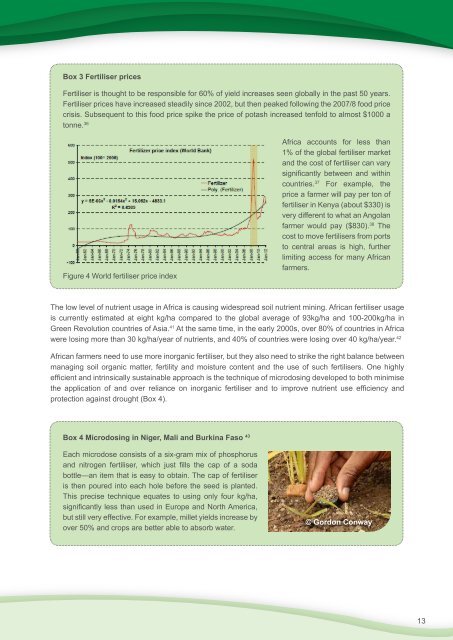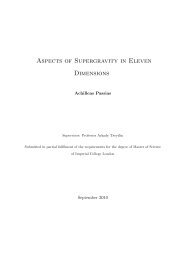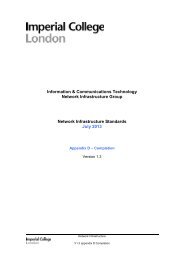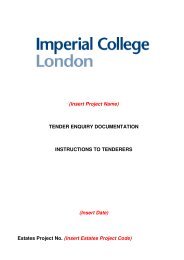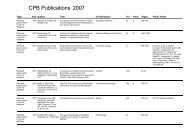Sustainable Intensification: - Workspace - Imperial College London
Sustainable Intensification: - Workspace - Imperial College London
Sustainable Intensification: - Workspace - Imperial College London
You also want an ePaper? Increase the reach of your titles
YUMPU automatically turns print PDFs into web optimized ePapers that Google loves.
Box 3 Fertiliser prices<br />
Fertiliser is thought to be responsible for 60% of yield increases seen globally in the past 50 years.<br />
Fertiliser prices have increased steadily since 2002, but then peaked following the 2007/8 food price<br />
crisis. Subsequent to this food price spike the price of potash increased tenfold to almost $1000 a<br />
tonne. 36<br />
Figure 4 World fertiliser price index<br />
Africa accounts for less than<br />
1% of the global fertiliser market<br />
and the cost of fertiliser can vary<br />
significantly between and within<br />
countries. 37 For example, the<br />
price a farmer will pay per ton of<br />
fertiliser in Kenya (about $330) is<br />
very different to what an Angolan<br />
farmer would pay ($830). 38 The<br />
cost to move fertilisers from ports<br />
to central areas is high, further<br />
limiting access for many African<br />
farmers.<br />
The low level of nutrient usage in Africa is causing widespread soil nutrient mining. African fertiliser usage<br />
is currently estimated at eight kg/ha compared to the global average of 93kg/ha and 100-200kg/ha in<br />
Green Revolution countries of Asia. 41 At the same time, in the early 2000s, over 80% of countries in Africa<br />
were losing more than 30 kg/ha/year of nutrients, and 40% of countries were losing over 40 kg/ha/year. 42<br />
African farmers need to use more inorganic fertiliser, but they also need to strike the right balance between<br />
managing soil organic matter, fertility and moisture content and the use of such fertilisers. One highly<br />
efficient and intrinsically sustainable approach is the technique of microdosing developed to both minimise<br />
the application of and over reliance on inorganic fertiliser and to improve nutrient use efficiency and<br />
protection against drought (Box 4).<br />
Box 4 Microdosing in Niger, Mali and Burkina Faso 43<br />
Each microdose consists of a six-gram mix of phosphorus<br />
and nitrogen fertiliser, which just fills the cap of a soda<br />
bottle—an item that is easy to obtain. The cap of fertiliser<br />
is then poured into each hole before the seed is planted.<br />
This precise technique equates to using only four kg/ha,<br />
significantly less than used in Europe and North America,<br />
but still very effective. For example, millet yields increase by<br />
over 50% and crops are better able to absorb water.<br />
© Gordon Conway<br />
13


